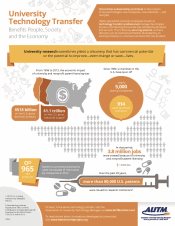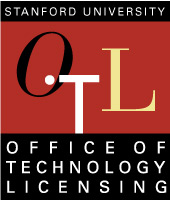The mission of Stanford University's Office of Technology Licensing (OTL) is to promote the transfer of Stanford technology for society's use and benefit while generating unrestricted income to support research and education.
Why license?
In 1980, the U.S. Congress passed Public Law 96-517, the Bayh-Dole Act, which provides that rights to inventions resulting from government-sponsored research at universities would be assigned to the universities.
Everyone Wins
While it is relatively easy to measure OTL's performance in direct financial terms, it is more difficult to characterize the less tangible benefits of technology licensing. Nonetheless, technology licensing has provided such valuable benefits.

Download this infographic on the benefits of technology transfer!
(Association of University Technology Managers)
Who benefits from licensing:
- Stanford
- Stanford inventors
- Industry
- Silicon Valley/Biotech Bay
- The U.S. Government
- The Public
At OTL, the close relationships we have built with both Stanford faculty and outside industry afford us a special opportunity to help facilitate the transfer of technology in ways that could benefit society for generations. Our charter is to create new connections between inventors and industry. We are planting seeds today for the products of tomorrow.
Socially Responsible Licensing
Stanford is committed to socially responsible licensing. Stanford has endorsed the “In the Public Interest: Nine Points to Consider in Licensing University Technology” document which recommends that we consider including provisions that address unmet needs, such as those of neglected patient populations or geographic areas, giving particular attention to improved therapeutics, diagnostics and agricultural technologies for the developing world.
Our primary way to ensure that developing countries can practice Stanford inventions is to forego the filing of patent applications in developing countries. For health-related technologies which could be useful to the population in developing countries, we can and have waived royalties for sales in developing countries. We believe that each licensing situation requires careful consideration to what licensing provisions should be included so that fundamental research is translated to new products and technologies. Our objective is to optimize the likelihood that new knowledge will be used for the public good, whether locally or globally.
For more detailed information, read Hans Wiesendanger's "A History of OTL".
